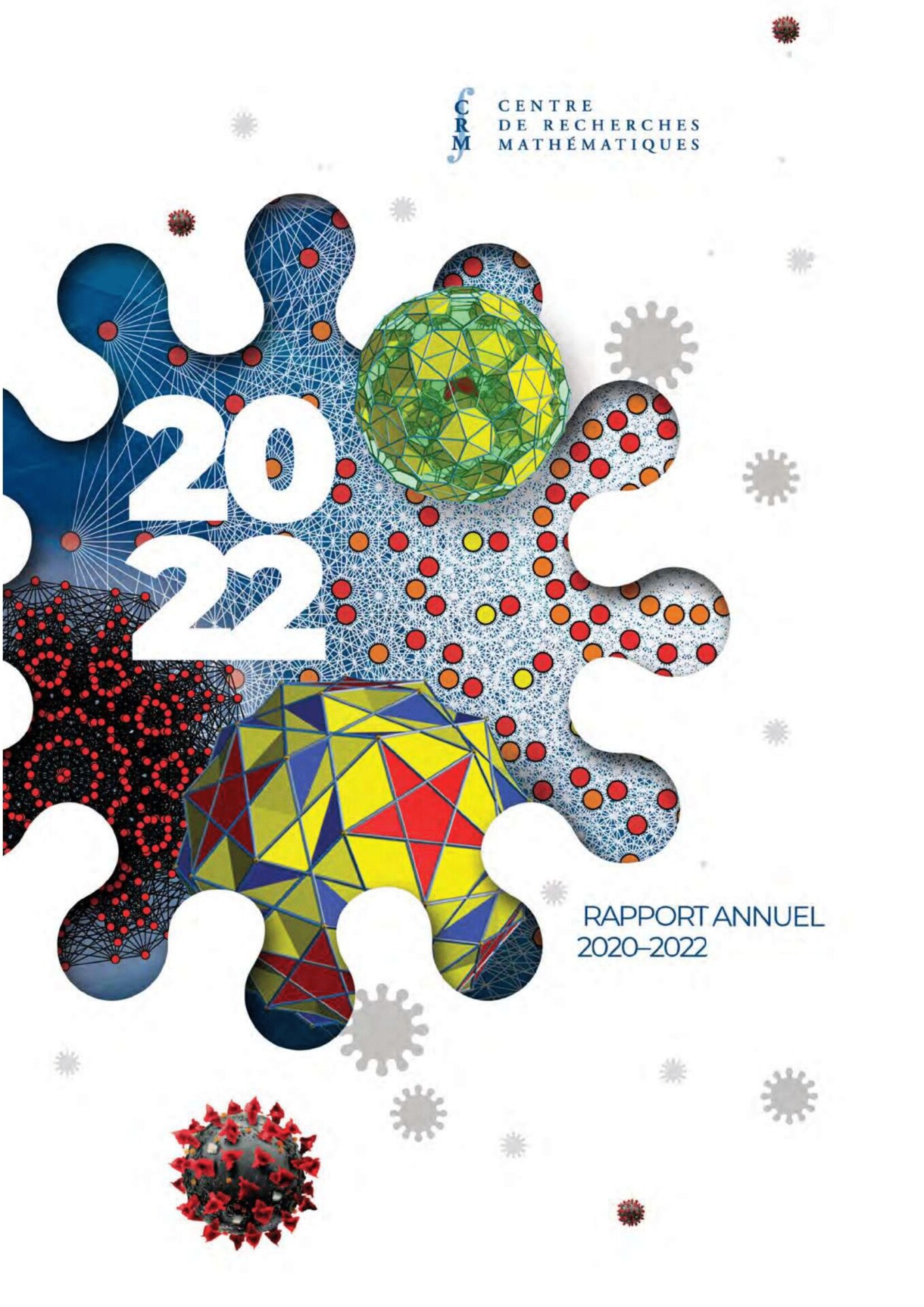RESEARCH TALKS
Olivier Bahn (HEC Montréal)
Integrated Assessment Modeling of Emerging Challenges: The Case of Climate Change
Abstract
To assess the potential long-term evolution of climate, it is essential to compute how anthropogenic greenhouse gas (GHG) emissions may change over time on a global scale. This requires an evaluation of the various drivers of GHG emissions, including demographic, economic, and technological factors. An integrated assessment approach combines these socio-economic elements with geophysical and environmental considerations, often employing computer-based integrated assessment models (IAMs). These models not only help evaluate future GHG emissions but also assess climate strategies, such as mitigation and adaptation options, and their impacts on climate change and associated damages. In this presentation, I will particularly focus on the development of the AD-MERGE 2.0 IAM at GERAD.
Morgan Craig (Université de Montréal)
Drivers of heterogeneous age-related immune kinetics after COVID-19 vaccination
Abstract
Mass COVID-19 vaccination campaigns shed light on how individual-level heterogeneity in vaccine responses affects population-level protection against pathogens. Age was seen to be highly correlated to mRNA COVID-19 vaccine efficacy, with older adults exhibiting generally weaker vaccine-elicited outcomes than younger individuals. However, this differential effect was shown to be reduced after the priming phase, with seniors “catching up” to the humoral responses of younger individuals. The immunological mechanisms driving these variable outcomes remain to be elucidated. Their identification would help to improve vaccination strategies and pinpoint characteristics predictive of strong immunity following prime-boost vaccination.
To gain insight into the spectrum of immune responses stimulated by mRNA COVID-19 vaccines, we constructed a mathematical model that comprehensively describes the development of immunological memory after vaccination. We extensively calibrated our model to clinical trial data from younger healthcare workers and older individuals. Our model’s predictions suggest that seniors exhibit weaker CD4+ T helper cell responses with accelerated clearance kinetics that contribute to overall weaker vaccine-induced antibody responses. This result has important implications for annual COVID-19 vaccination campaigns and public health planning.
Andrew Granville (Université de Montréal)
Reasoning and creativity in mathematics and AI AI
Abstract
When AI appears to give more than it was programmed for, how should we interpret this? Has the AI been “reasoning”? Can the AI be “creative”? Perhaps one should ask first what those words really mean, whether they fit what AI is doing, or whether these concepts need to be interpreted differently?
Frédéric Guichard (McGill University)
Anticipating ecological tipping points under ongoing environmental change
Abstract
Ongoing climate change challenges current mathematical and computational approaches to the study of ecosystems as dynamic and coupled systems. In particular, the nonlinear response of species and whole ecosystems to their environment combined with accelerating changes in the global climate make the study of tipping points leading to catastrophic shifts in ecosystem health one of the hardest problems in ecology. I will first summarize standard approaches to the early detection of tipping points in ecology, including recent applications of deep learning to the detection of bifurcation points informed by nonlinear dynamical models. I will then present recent results illustrating how new types of catastrophic shifts emerge from explicitly integrating the rate of climate-driven changes in ecosystems. There are promising avenues for expanding our ability to identify and learn early warning signals of ecological tipping points from dynamical systems.
Denise Klein (McGill University)
Centre for Research on Brain, Language and Music: Modelling challenges in Language and Music Neuroscience
Abstract
The CRBLM is an international hub for basic and applied research and training focused on the organization, function and dysfunction of the unique neurobiological and social endowment of language and music, and their interaction. As an interdisciplinary research cluster strongly rooted in Quebec’s multicultural landscape, our work addresses critical issues across the lifespan in language and music neuroscience, with translational benefits for the clinic, the classroom, and society. The talk will outline a few examples of such work.
Guillaume Lajoie (Université de Montréal)
Foundation Models For Neuroscience: uncovering universal neural patterns for many uses
Abstract
In this talk, I will present recent progress toward building AI foundation models for neuroscience. Much like large language models have done for text, neuro-foundation models aim to capture general and universal patterns of neural activity from different acquisition modalities, across brain regions, tasks, and even species. The learned representations can then be used to fine tune for varied tasks from diagnostic assistance, to machine learning tools for neuro-technology. I will discuss how such foundation models are poised to assist various area of healthcare.
Flavie Lavoie-Cardinal (Laval University)
Navigating Neuronal Landscapes with Smart Nanoscopy
Abstract
Understanding the molecular mechanisms underlying synaptic transmission is challenging in part because synapses are tiny, exhibit a wide range of shapes and internal structures and undergo activity-dependent plasticity. Optical nanoscopy allows us to characterize the molecular dynamics and interactions of synaptic proteins at their scale: the nanoscale. Developing AI-assisted frameworks for optical nanoscopy allows real-time optimization of multi-modal live-cell imaging as well as for quantitative high throughput image analysis. We developed AI approaches for: 1) quantitative analysis of neuronal protein organization in optical nanoscopy images and 2) the optimization of image acquisition schemes, especially in living neuronal samples. This allows us to characterize activity-dependent remodeling of synaptic nanostructures and localized modulation of synaptic activity. The development of data-driven microscopy is transforming our ability to discover and characterize rare phenomena that may influence synaptic connections and thus to discover new mechanisms influencing the proper functioning of our brain.
David McLeod (Université de Montréal)
Epistasis and evolutionary epidemiology
Abstract
Epistasis occurs when the effect of one mutation depends on the presence or absence of other mutations, that is, the effect of mutations depend upon their genetic background. Epistasis can have significant evolutionary implications. Although epistasis has been well-studied in population genetics, it is typically treated as a constant parameter. Thus, how environmentally-dependent epistasis shapes the evolutionary process remains poorly understood. I will discuss some examples of environmentally-dependent epistasis in evolutionary epidemiology, and show how epistasis can be used to better contextualise complex results.
Marie-Jean Meurs (Université du Québec à Montréal)
SylvCiT, an intelligent software to maximize the resilience and benefits of urban trees in the face of global changes
Abstract
SylvCiT is a platform for analyzing urban forests at different scales, including a planting simulation and species recommendation tool. Modeling trees according to their functional group, i.e. a grouping based on the similarity of their traits, for example drought tolerance or canopy size, allows managers to significantly increase the resilience of their forests. With a clear analysis of forests before and after planting, it becomes easier to predict and plan their ecosystem benefits as well as the necessary maintenance activities.
Based on optimization algorithms, SylvCiT currently offers a simple interface to identify gaps in urban forests and propose recommendations to correct them.
In collaboration with our partners specializing in urban forestry, the SylvCiT research team is currently working on several machine learning, modeling and optimization projects. For example, state-of-the-art growth prediction techniques will be integrated into the platform to enable more representative monitoring of plantations over time; a participatory application will allow private tree owners to identify the best options for their own plantations. Finally, the integration of climate data and forecasts will allow urban managers to better anticipate the resilience of their forests in the face of climate change.
Erica Moodie (McGill University)
Precision medicine: estimation via flexible modeling of censored responses
Abstract
To achieve the goal of providing optimal care to each patient, physicians must personalize treatments. Decision-making at multiple stages during disease progression can be formalized as an adaptive treatment strategy. In order to recommend an optimal treatment, it is necessary to estimate causal effects. In this talk, I will discuss an extension of the popular Q-learning estimation approach, adapted to censored responses, using Bayesian additive regression trees (BART) for each stage in a treatment sequence. The developments are motivated and applied to an analysis aimed at estimating optimal immunosuppressive treatment strategies to maximize disease-free survival in a cohort of patients who underwent allogeneic hematopoietic cell transplantation for myeloid leukemia.
Joint work with Xiao Li, Brent R Logan, and S M Ferdous Hossain.
Guy Wolf (Université de Montréal)
Guided data exploration with (semi-)supervised manifold learning
Abstract
Modern challenges in exploratory data analysis, especially in biomedical applications involving single cell data, give rise to representation learning techniques that aim to capture intrinsic data geometry (e.g., patterns and structures), while separating it from data distribution that is typically biased by data availability and collection artifacts, thus allowing discovery of rare subpopulations and sparse transitions between meta-stable states. A common approach in this area, which I discuss in this talk, is the construction of a data-driven diffusion geometry that both captures intrinsic structure in data and provides a generalization of Fourier harmonics on it, combining tools and perspectives from a range of fields including manifold learning, graph signal processing, and harmonic analysis. However, most methods following this paradigm rely on unsupervised learning, under the assumption that the target phenomena of interest will form the dominant emergent patterns in the data, uncovered by the extracted representation. While this is the case in certain controlled experiment conditions, such property cannot be guaranteed in many observational settings. As an alternative, here we will discuss semi-supervised approaches that leverage annotations and meta information that often accompanies collected data, in order to guide the data geometry to accentuate task-informed structures in the learned representation. This approach will be demonstrated in data exploration tasks, with emphasis on data visualization.


